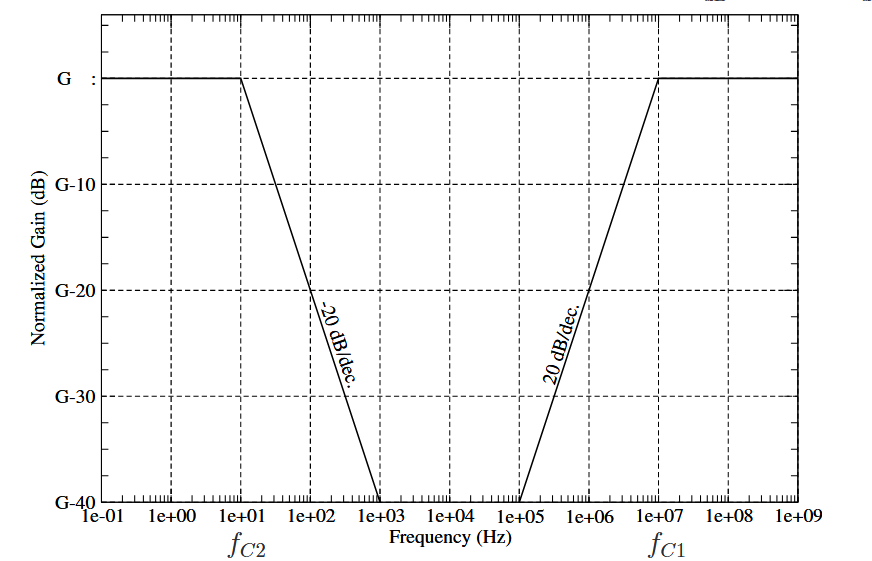In electronics, a bandstop filter is a circuit with a frequency response that has one stopband in the centre, surrounded by two passbands.
 We can’t realise a fully vertical drop or rise, but we can realise a steeper slope. As this gap increases, the scope gets insignificant. Why a bandstop filter? When there’s a region of frequencies that we want to exclude, like ambient frequency (around 60 Hz).
We can’t realise a fully vertical drop or rise, but we can realise a steeper slope. As this gap increases, the scope gets insignificant. Why a bandstop filter? When there’s a region of frequencies that we want to exclude, like ambient frequency (around 60 Hz).
The bandstop transfer function is the sum of the high-pass functions and the low-pass functions, i.e., the two sub-circuits are connected in parallel and then summed at the end.
Circuits
The inverting adder is usually used to sum the circuits at the end. We use two op amps to add the signals from the parallel connection of a high-pass and low-pass filter:
